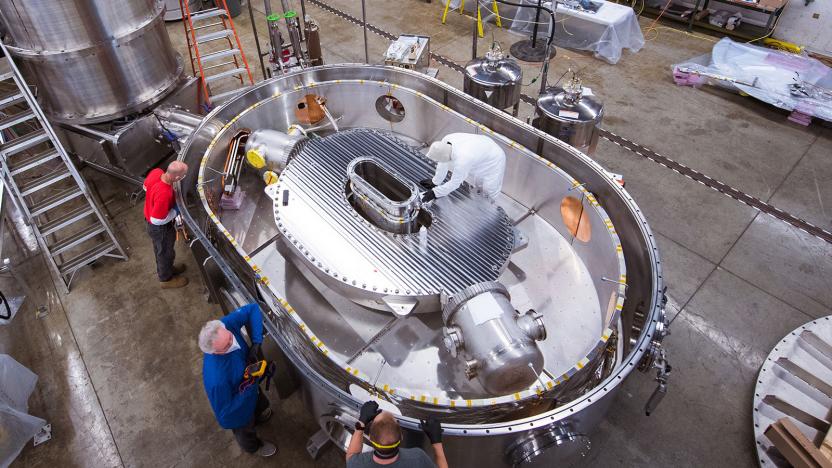electromagnetism
Latest

Fusion energy nears reality thanks to an ultra-powerful magnet
Fusion energy is closer to becoming a practical reality after researchers successfully tested an extremely powerful magnet.

Biofeedback anti-stress pen: a great idea that's not so great at reducing stress
We've all known for quite some time that the pen is mightier than the sword, and now science has given us a pen that is mightier (sort of) than the stress of that TPS report your boss needs right now. A student at Delft University in The Netherlands will receive his PhD this week for research that led him to create just such a pen. Based upon the obvious premise that people play with their writing utensils when anxious, the pen uses motion sensors instead of more conventional means of stress detection. When the pen detects stressful movements, internal electromagnets provide corresponding counter-motion feedback to stop your nervous tics. During experiments, the pen did diminish test subjects' heart rates around five percent, but according to feedback none of them actually "felt" less stressed. The pen isn't yet commercially available, and given its dubious value as an actual stress reliever, we would look to more satisfying methods to aid the relaxation process.

Galaxy shocker: laws of physics may vary throughout the universe
Oh, brother. Just when you thought you had everything figured out, along comes a team of astrophysicists based in Australia and England to turn your world upside-down. As the story goes, a new "report describes how one of the supposed fundamental constants of nature appears not to be constant after all," with the fine-structure constant actually varying throughout testing. The crew measured the number, dubbed "alpha," in about 300 faraway galaxies, and they consistently found that it measured differently than on Earth. Professor John Webb from the University of New South Wales even stated that it "seemed to vary continuously along a preferred axis through the universe," which effectively means we're back to square one on figuring just about everything out. Burn the books, kids.

Strained graphene leads to pseudo-magnetic fields, bends physics even further
Man, if only this had been discovered before Ariadne was tasked with building impossible dreams. A team of scientists caught high-fiving over at Lawrence Berkeley National Laboratory have a new and riveting announcement to share, and it revolves around our old and trusted friend, graphene. This go 'round, the self-proclaimed "extraordinary form of carbon" is being stressed to its max, but not without good reason. Thanks to inquisitive minds and a "stroke of serendipity," a research team was able to create magnetic fields in excess of 300 tesla by simply straining graphene in a certain way. For physicists, the discovery is a dream come true, particularly when you realize that magnetic fields in excess of 85 tesla were practically impossible to come across in a laboratory setting. The benefits here? It's honestly too early to tell, but gurus in the field are already suggesting that the "opportunities for basic science with strain engineering [are] huge." Something tells us Magneto would concur.


